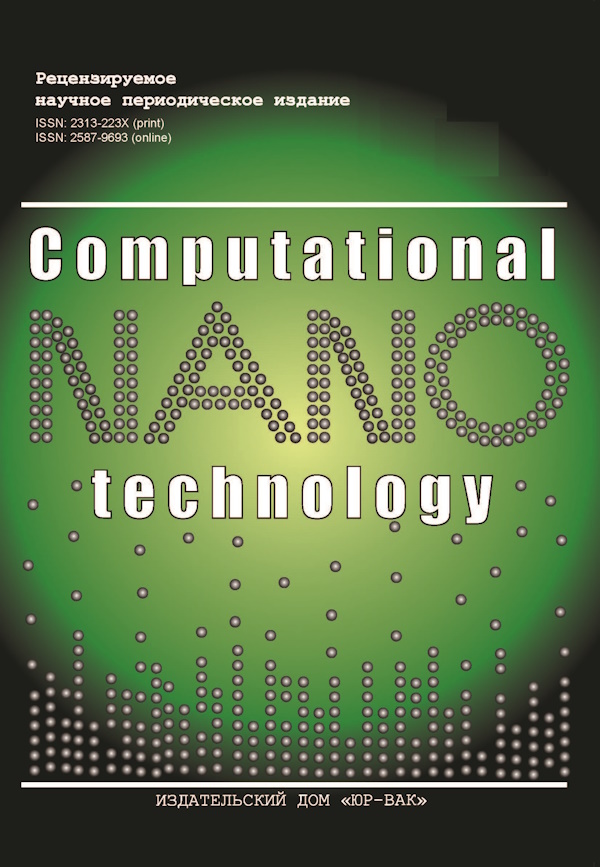Factors of Efficient Generation of Electricity in a Solar Cell with Nanohetero Junctions
- Authors: Muminov R.A.1, Imamov E.Z.2, Rakhimov R.K.1, Askarov M.A.3
-
Affiliations:
- Institute of Materials Science of the SPA “Physics-Sun” of the Academy of Sciences of the Republic of Uzbekistan
- Tashkent University of Information Technologies named after Muhammad al-Khwarizmi (TUIT) of the Ministry for Development of Information Technologies and Communications of the Republic of Uzbekistan
- Karakalpak State University named after Berdakh of the Ministry of Higher and Secondary Specialized Education of the Republic of Uzbekistan
- Issue: Vol 10, No 1 (2023)
- Pages: 119-127
- Section: Nanotechnology and nanomaterials
- URL: https://journals.eco-vector.com/2313-223X/article/view/545846
- DOI: https://doi.org/10.33693/2313-223X-2023-10-1-119-127
- ID: 545846
Cite item
Abstract
The question of using non-crystalline silicon as a substrate of an effective solar cell is considered. It is shown that the creation of an effective solar cell from non-crystalline silicon is possible only at high densities of localized states in the depth of the silicon band gap. It is shown that a particularly effective conversion of solar energy into electricity is possible when noncrystalline silicon and lead chalcogenides are combined as components of hetero junctions in the nano-dimensional state. It is shown that the use of non-crystalline silicon as a substrate for an effective solar cell is possible only when combined with nanoscale lead chalcogenides. It is shown that the effects of multiexiton generation and carrier multiplication are especially characteristic of lead chalcogenides. The ranges of the effects of carrier multiplication and multi-exciton generation in nanoclusions of lead chalcogenides (PbS, PbSe) have been determined.
Full Text
About the authors
Ramizulla A. Muminov
Institute of Materials Science of the SPA “Physics-Sun” of the Academy of Sciences of the Republic of Uzbekistan
Author for correspondence.
Email: detector@uzsci.net
ORCID iD: 0000-0001-7243-595X
Academician, Dr. Sci. (Phys.-Math.), Professor; Physical-Technical Institute of the SPA “Physics-Sun” of the Academy of Sciences of the Republic of Uzbekistan
Uzbekistan, TashkentErkin Z. Imamov
Tashkent University of Information Technologies named after Muhammad al-Khwarizmi (TUIT) of the Ministry for Development of Information Technologies and Communications of the Republic of Uzbekistan
Email: erkinimamov@mail.ru
ORCID iD: 0009-0007-4952-1842
Dr. Sci. (Phys.-Math.), Professor; Department of Physics of the Tashkent University of Information Technologies named after Muhammad al-Khwarizmi (TUIT) of the Ministry for Development of Information Technologies and Communications of the Republic Uzbekistan
Uzbekistan, TashkentRustam Kh. Rakhimov
Institute of Materials Science of the SPA “Physics-Sun” of the Academy of Sciences of the Republic of Uzbekistan
Email: rustam-shsul@yandex.com
ORCID iD: 0000-0001-6964-9260
Dr. Sci. (Eng.); Head at the Laboratory No. 1 of the Institute of Materials Science of the SPA “Physics-Sun” of the Academy of Sciences of the Republic of Uzbekistan
Uzbekistan, TashkentMardon A. Askarov
Karakalpak State University named after Berdakh of the Ministry of Higher and Secondary Specialized Education of the Republic of Uzbekistan
Email: asqarovm@list.ru
ORCID iD: 0000-0003-4627-3170
PhD student; Department of Semiconductors Physics of the Karakalpak State University named after Berdakh of the Ministry of Higher and Secondary Specialized Education of the Republic of Uzbekistan
Russian Federation, Nukus, Republic KarakalpakstanReferences
- Gremenok V.F., Tivanov M.S., Zalessky V.B. Solar cells based on semiconductor materials. Minsk: Publishing House of the BSU Center, 2007. 222 p.
- Gubanov A.I. Quantum-electronic theory of amorphous and liquid semiconductors. Moscow: Publishing House of the USSR Academy of Sciences, 1963.
- Mott N., Davis E. Electronic processes in crystalline substances. Moscow: Mir, 1974.
- Imamov E.Z., Muminov R.A., Rakhimov R.H. et al. Modeling of electrical properties of a solar cell with many nano-hetero transitions. Computational Nanotechnology. 2022. Vol. 9. No. 4. Pp. 70–77. (In Rus.)
- Askarov M.A., Imamov E.Z., Muminov R.A., Ismaylov K.A. Formation of a highly efficient silicon solar cell with nano heterojunctions based on lead chalcogenides. Science and Education in Karakalpakstan. 2022. No. 4-2. Pp. 226–230.
- Askarov M.A., Imamov E.Z., Muminov R.A. Formation of a solar cell based on nano heterojunctions. Science and Innovation International Scientific Journal. 2023. Vol. 2. Issue 2. Pp. 226–230. DOI: https://doi.org/10.5281/zenodo.7677363.
- Schaller R.D., Klimov V.I. Phys. Rev. Lett. 2004. No. 92. P. 186601.
- Klimov V.I. J. Phys. Chem. B. 2006. No. 110. Pp. 16827–16845.
- Gusev A.I. Nanomaterials, nanostructures, nanotechnologies. Moscow: Fizmatlit, 2005. 416 p.
- Ledentsov N.N., Ustinov V.M., Shchukin V.A. et al. Heterostructures with quantum dots: production, properties, lasers. FTP. 1998. Vol. 32. No. 4. Pp. 385–410.
- Prigozhin I.R., Stengers I. Time, chaos, quantum. To solve the paradox of time. Moscow, 2000.
- Haken H. Synergetics. Springer, Berlin-Heidelberg, 1997.
- Wolf M., Brendel R., Werner J.H., Queisser H.J. J. Appl. Phys. 1998. No. 83. P. 4213.
- Ellingson R., Beard M.C., Johnson J.C. et al. Nano Lett. 2005. No. 5. P. 865.
- Sun B., Findikoglu A.T., Sykora M. et al. Hybrid photovoltaics based on semiconductor nanocrystals and amorphous silicon // Nano Lett. 2009. Vol. 9. No. 3. Pp. 1235–1241.
Supplementary files












